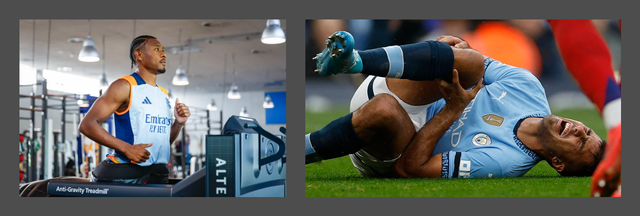Sports Injury as an Enemy of Career of Success

It’s essential to recognize that sustaining an injury at any point in time during a sports career poses a big threat to achieving overwhelming heights and achievements. Although it can never be avoided as a majority of sports are contact, and physical. Even if some are not in contact sports, body build-up for stamina, speed, and other benefits to get the best can stretch the muscles and cause sprain and fractures.
Having recognized injury as an enemy of my career, the next question to ask is “How do I minimize the risk of sustaining injury, even when I want to go the extra mile and get the best?”. Or, “How are injuries meticulously monitored, actively worked on, and speed up the recovery processes when it comes up in Sports career?”.
In this article, we will give a comprehensive guide on how to bounce back when faced with Injury, an enemy of progress.
The First Treatment: The quickest action to take when faced with a fresh injury is to halt every activity. Any attempt to continue will cause more pain, add extra injuries, and make the recovery process difficult. A First Aid kit should always be available at this instant. In the process of resting, reducing swelling and pain can be done by using ice. Using ice should be done every 15 to 20 minutes (1-2 hours), in 2 days. Remember that as the ice is been used, there is a necessity to compress it. To compress, the injured area must be wrapped with something that will add more pressure like an elastic bandage. It’s also recommended to keep the injured area raised, as this will reduce swelling. In sports like football, the medical team makes use of a chemical spray called Ethyl Chloride or Cooling Spray. All these efforts are to administer the quickest and most available method to do away with further complications.
Diagnostic Assessment: Once the pain persists after 48 hours, it’s recommended to go for a medical diagnosis. Diagnosis plays a very important role in identifying the root cause of the injury. As a plus, getting diagnosed will stop unnecessary spending of money and quickly trace the location of the injury internally in the body. A visit to a physiotherapist will help handle severe injuries like fractures, ligament tears, head injuries, and other dangerous conditions. As a benefit, the diagnosis might require an X-ray, MRI, and CT scans for image tests.
Once the fault is ascertained, proper treatment can be administered. Common painkillers like Ibuprofen can help with the injury, prescribed exercises to restore muscular mobility and strength, splinting rituals, and possibly a surgical intervention can be beneficial to a victim.
Nutritional Aid: To achieve recovery, one must eat food that is rich in protein, calcium, vitamin D, and Omega-3 fatty acids. This will enhance tissue repair and healthy bones. Staying actively hydrated, and having enough sleeping time will make the body very prepared and also help in a speedy recovery process.
Don't forget that if one must heal from any form of injury, all the steps to be taken listed above are not just enough. One must make use of activities that enhance a gradual return. A rate of 10% intensity is recommended per week, as the use of protective gear, and monitoring pain or discomfort will account for sensitive actions that will serve as a sign to either slow down the activity or increase pace.
As a recommendation, preventing a re-occurrence of injury is vital. After the healing process, one must perform tailored strength-building exercises on affected areas, work hand-in-hand with coaches who train for excellent improvement, and periodically go for check-ups for more advice that will help solidify any recovery processes.